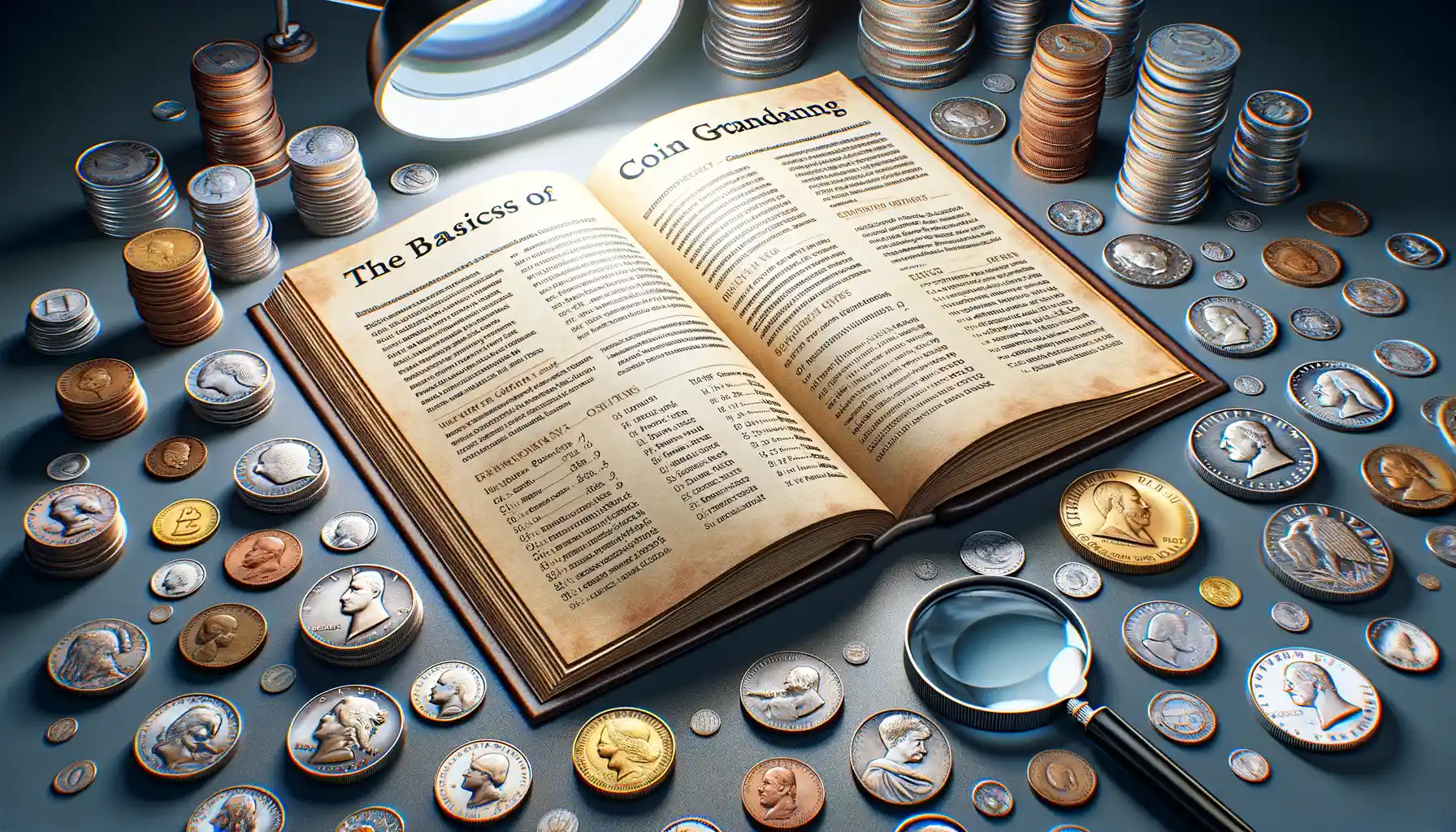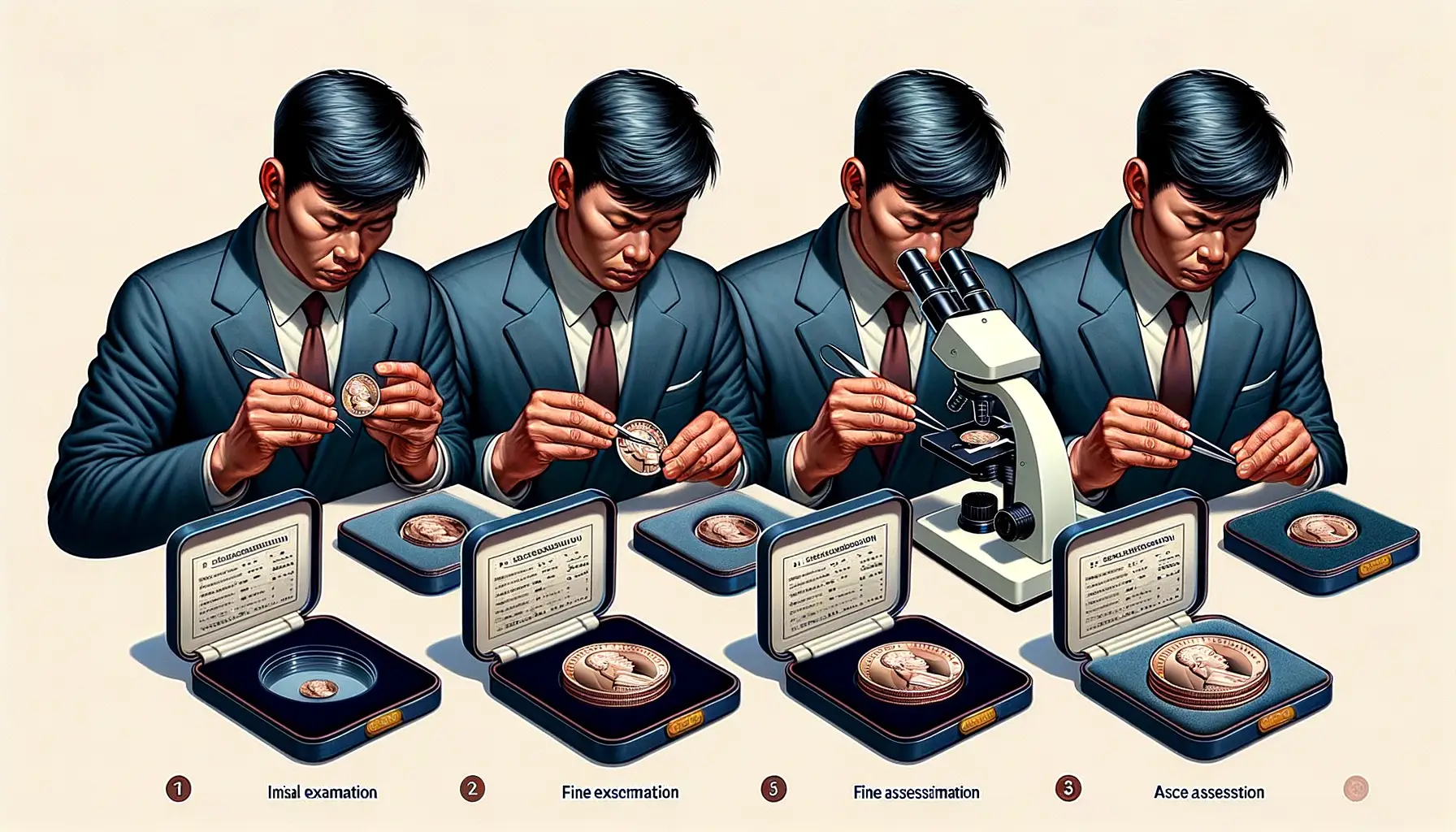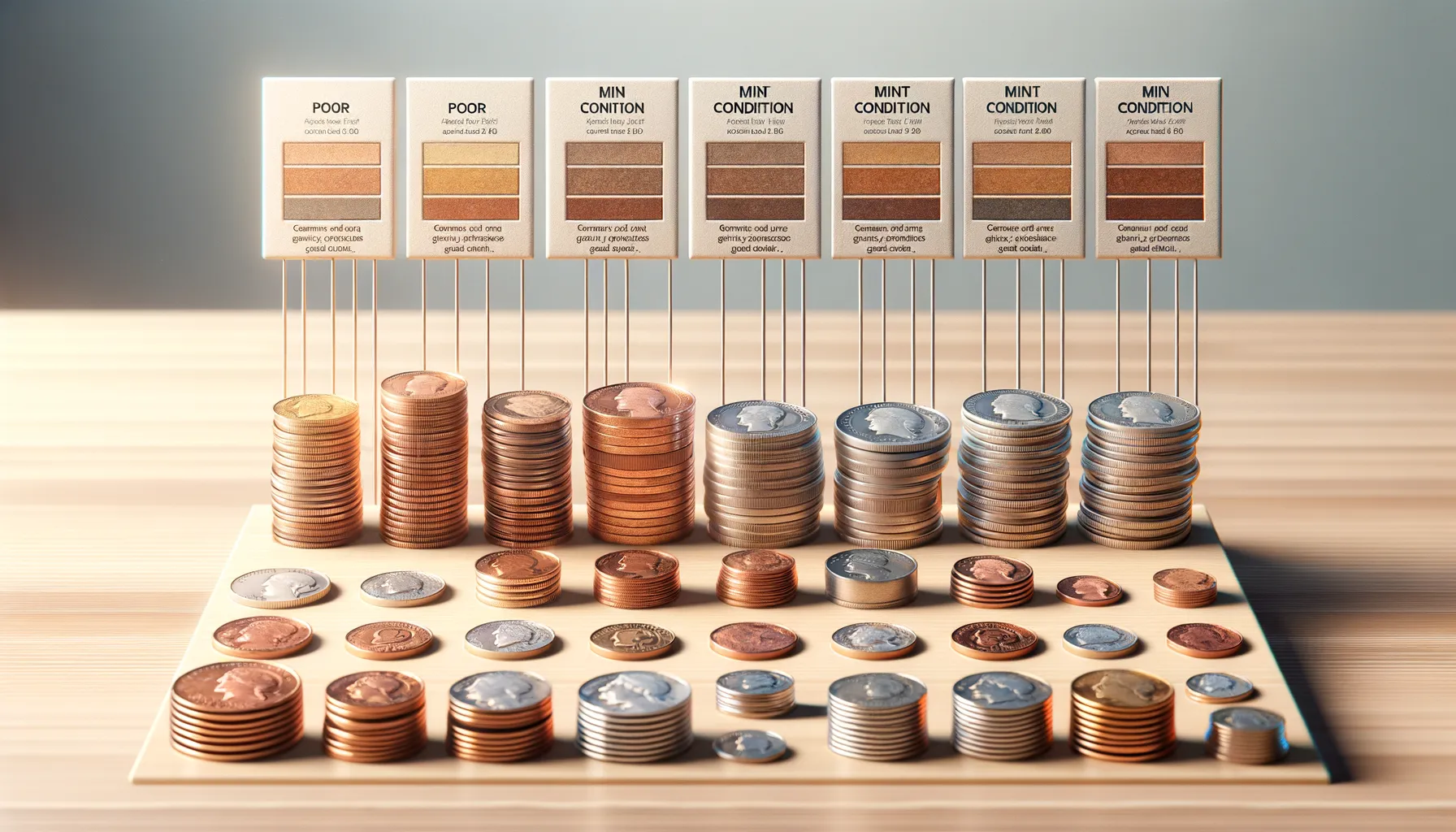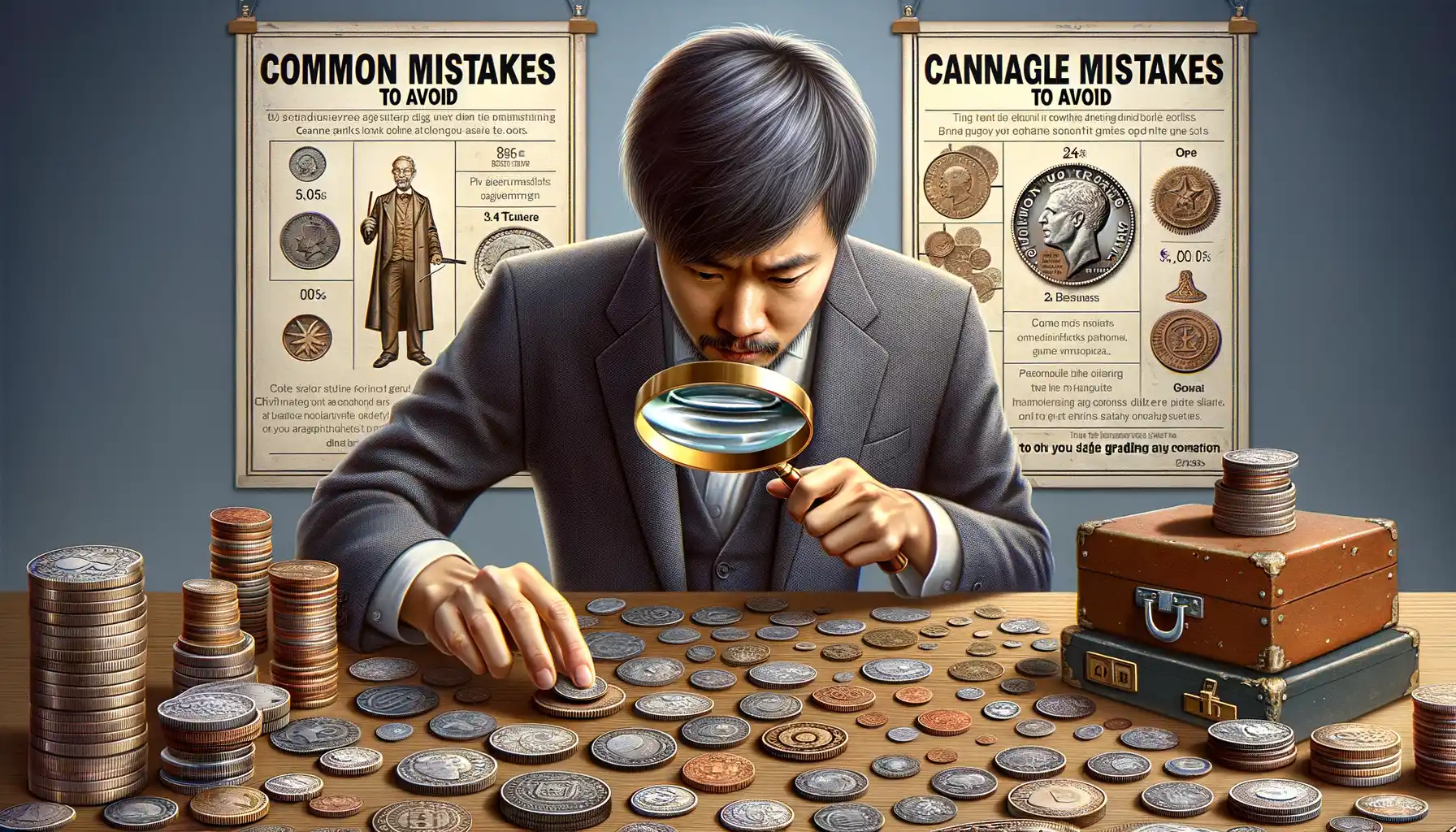What is Coin Grading and Why It Matters
Why Coin Grading is the Backbone of Collecting
Imagine stepping into a treasure trove of ancient coins – each one telling a silent story. But how do you know which ones are truly priceless gems versus shiny imitations? That’s where coin grading swoops in as your knight in shining armor.
In essence, coin grading is the art (and science) of evaluating a coin’s condition to determine its value. Every scratch, sparkle, or blemish contributes to the narrative. It’s not just about numbers; it’s about understanding history, rarity, and beauty wrapped in metal.
Why does it matter? Because in the coin world, even a tiny imperfection can mean the difference between a modest $50 and a jaw-dropping $5,000. Without grading, you’d essentially be navigating a map without a compass. For collectors and investors alike, this process ensures transparency, trust, and an unmatched level of excitement.
So, when it comes to coins, grading isn’t just important – it’s your guide to treasure hunting like a pro.
The Basics of Coin Grading Standards

Why Coin Grading Standards Are Your Treasure Map
Understanding coin grading standards isn’t just for seasoned collectors—it’s your compass through the world of numismatics. Think of it this way: every coin has a story to tell, and grading is how you read that story. Whether it’s a glimmering uncirculated beauty or a timeworn relic of history, these standards bring clarity to what eyes alone might miss.
Coin grading revolves around a few key factors: preservation, strike, luster, and eye appeal. Picture holding a coin gleaming with its original mint shine—its value skyrockets compared to one dulled by wear. Did you know even the smallest scratch can bump a coin down several grades? That’s why the tiniest detail matters in grading!
- MS (Mint State): These coins look untouched by human hands, like they were frozen in time right after minting.
- AU (About Uncirculated): A whisper of handling shows here—but only just.
- VF (Very Fine): Here, the coin tells tales of use without losing its character.
Grading standards aren’t arbitrary; they’re a universal language between buyers, sellers, and history buffs. Decoding them feels like unlocking a secret vault, where precision meets artistic appreciation.
Steps in the Coin Grading Process

Where the Journey Begins: Examination and Authentication
Before a coin can proudly hold its grade, the process starts with an expert’s steady hands and a keen eye. The first step is authentication. Is your coin the real deal? Specialists meticulously inspect its material, weight, dimensions, and even the tiniest design details. Imagine someone gently cradling a thousand-year-old artifact, scanning for clues left by history itself. Once verified as genuine, the coin moves to the next phase.
Tools like magnifying glasses and microscopes come into play here. Even the smallest scratch, nick, or discoloration gets noted. You’d be surprised how much a faint rim mark can say!
The Art of Assigning a Grade
This is where science meets artistry. Graders assess every nuance:
- Strike Quality: How crisp is the original design?
- Surface Preservation: Are there noticeable blemishes or wear?
- Luster: Does the surface reflect light in a way that dazzles?
- Color/Patina: Has time painted a beautiful story or caused unsightly tarnish?
Finally, after a careful dance between clarity and precision, the coin earns its official grade and becomes part of numismatic history. It’s not just a number – it’s its legacy!
Common Coin Grading Scales and Their Interpretations

The Sheldon Scale: From Barely There to Near Perfection
When it comes to grading coins, the Sheldon Scale is like the compass in a treasure hunter’s map—it points you in the right direction and helps define value. This scale, ranging from 1 to 70, is the gold standard. But what do these numbers actually mean?
Let’s break it down:
- 1-10: These coins have seen better days. Think about a century-old penny found in the corner of an attic—worn-down but still holding a story.
- 11-50: Details start to emerge! You’ll notice features like dates and designs, though wear is visible.
- 51-70: Here’s where the magic happens. Coins graded in this range show more brilliance, with 70 being perfection—a flawless work of art that makes any collector’s heart race.
Proof Coins vs. Circulated Coins
Ever wonder why some coins seem to glow? That’s because they’re proof coins, made specifically for collectors. Their mirror-like surfaces tell a different story on the scale. For example, a proof coin at 65 will be breathtaking, but a circulated coin at the same grade may appear quite ordinary. Understanding this distinction can save you from overpaying—or underselling—a rare gem.
Mistakes to Avoid and Tips for Accurate Coin Grading

Steering Clear of Common Grading Pitfalls
Coin grading might seem like an exact science, but even seasoned collectors can stumble! Here are a few traps to avoid that could save you from frustration—or worse, costly mistakes.
- Relying on poor lighting: Grading coins under dim or inconsistent light is like trying to admire art through foggy glasses. Always use natural light or a bright, neutral lamp to spot details.
- Handling coins with bare hands: Oils and dirt from your skin can damage a coin’s surface permanently. Trust me, investing in a pair of cotton gloves is worth every penny.
- Ignoring tiny imperfections: A minuscule scratch or faint discoloration might seem harmless but could significantly lower the grade. Pay attention to the “hidden corners” of the coin—edges, rims, and beneath intricate designs.
Tried-and-True Tips for Precision Grading
Ready to sharpen your grading skills? Let’s dive into techniques that separate casual collectors from true experts.
Tip #1: Invest in a magnifier—it’s your best friend! A quality loupe with 5x–10x magnification will help you detect minute flaws invisible to the naked eye.
Tip #2: Study reference guides extensively. If terms like “strike” or “luster” feel like Greek, it’s time to brush up! Books, videos, and online forums are goldmines of knowledge.
Tip #3: Compare your coin to professionally graded examples. This practice gives you a benchmark and sharpens your eye for subtle distinctions over time.